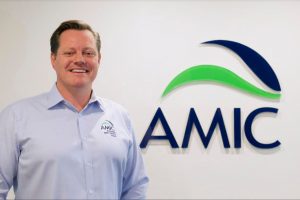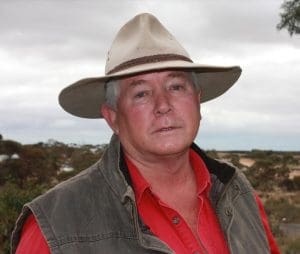
Victorian Premier Daniel Andrews – forecasting a varied approach on COVID-19 meatwork workforce cuts
VICTORIAN Premier Daniel Andrews today indicated the State Government was working on tailoring its required workforce cuts to different meat processing sectors under new Stage Four COVID-19 restrictions.
At the daily COVID-19 update today, Premier Andrews said the government would not be necessarily applying the same workforce cuts at every processor, with variation between different meat sectors.
But Mr Andrews said there would not be any delay to the midnight Friday deadline for implementation of the workforce changes.
“We will get the best outcome we can for both the reduction of workers, the reduction of risk and the maintenance of critical supplies of food.”
Earlier this week Sheep Central was told the changes for Victorian meatworks from midnight Friday will mean a one third cut in peak capacity workforce numbers, with plants only able to have 66pc of their peak staff number onsite on any day.
This would mean companies might need to change their operating hours or increase the number of shifts in a week to meet production targets.
Looking to reduce meat worker numbers – Premier
At the daily COVID-19 update today, Mr Andrews resisted efforts to get him to clarify how the government was determining the required workforce cuts meat processors would have to implement.
“Peak capacity is more than 100 percent, some of these abattoirs will operate well beyond 100 percent when you get deep into Spring, for instance.
“So we are looking to reduce as much as we possibly can, and I think it will finish up being close to 66pc number off of a 100 percent base, if you like,” he said.
“We are working as hard as we can to reduce these (worker) numbers as much as we can.
When asked if he was defining ‘peak capacity’ as the utmost production a plant could do in a year or as the levels of last week – in some cases the lowest in some time — Mr Andrews said he “didn’t necessarily accept that you can have one rule across the whole board.”
“I think everyone is in a different position and what I am saying to you is that we are still working through that.
“We’ll get this workforce down to as low as we can, we think that is going to finish at about that 66pc, so two thirds – two thirds of what would be 100pc, that’s what we are chasing,” he said.
“It may vary from workplace to workplace and there are discussions going on literally as I stand here now and there could even be variation, and I think in fact there will be, variation between beef and lamb, poultry and seafood.”
Mr Andrews disputed the suggestion that most red meat processors were already working at below peak capacity, indicating there was no need for any changes.
“No, that’s not right, they will be lower than before Stage Four came in.”
Mr Andrews recognised that processors in different sectors were working within various production seasons and life cycles.
“Some can wait, some can’t – there will be a differentiated approach, that’s the challenge I suppose in trying to provide one number that covers the whole field, that’s not what we are doing.”
A different deal for small processors
Mr Andrews said the workforce rules might vary between different meat processors.
“This may vary between red meat, poultry and fish, and these changes don’t come into effect at midnight tonight; they come into effect later in the week, and we are still in very active discussions with a lot of different abattoirs and meat processing plants, both large and small.
“Some of these facilities are quite small, they have a pretty small workforce, so we are probably less worried about a very small employer that has say six staff going down to four,” he said.
“We are much more concerned about the really big meat processing centres and driving down the number of staff and of course as well, making sure that those who remain on shift, remain on shift with PPE that is much closer to health PPE than it would be that anybody in an industrial setting would have worn in the past.”
Mr Andrews said the aim of the processing workforce cuts was to have less people working, particularly in high risk industries, and to not have a really critical shortage of basic food.
“We think we can achieve both of those things and when we have landed plans for each of those industries, we will have more to say about that.”
He resisted efforts to make further clarifications, saying it was not appropriate until the discussions with each sector were settled.
“We are going to get these numbers down so that across the board we’ll be as close as we can to two thirds of their normal output, two thirds of what they would otherwise be doing, that’s what we are going to try to achieve.
“I can’t guarantee that there won’t be a difference in approach.
“We will have more to say later this week and I think there will be different approaches based on different products.”
Workforce cut measures not up for negotiation – AMIC

AMIC CEO Patrick Hutchinson.
Australian Meat Industry Council chief executive officer Patrick Hutchinson said the council was working with Agriculture Victoria for further clarification on defining peak workforce production.
“Each site is doing its own reviews based on the limited knowledge we have on what the actual outcomes the Victorian government is looking to achieve.
“As stated, I continue to work with Agriculture Victoria and hopefully we’ll have more soon.”
Mr Hutchins said AMIC had been informed like all other industries that these measures are not up for negotiation.
“Our sincere hope as an industry is that the virus will be managed within this six weeks and that will allow us to return to normal processing capacity, which we hope will occur simultaneously with the spring lamb flush.
“If these measures are extended past six weeks, then of course this will be a massive issue for lamb processing.”
Concerns about processing capacity during lamb flush

VFF Livestock president Leonard Vallance
Victorian Farmers Federation Livestock president Leonard Vallance said he was concerned about how a lamb processing sector forced to implement workforce cuts would handle the flush of new season lambs in six weeks’ time.
“It’s a massive period for the industry, eight to 10 weeks of the year, when the industry has all the chocks out and they work three shifts and go like crazy.
“Going on the lambing percentages that are out there, are we going to get a flogging (on price) or not?”
Mr Vallance said he was “really nervous” about the future of the industry “because of the complete (COVID-19) stuff-up.”
He said he had seen a list of global companies who had ceased to exist because of the COVID-19 pandemic.
“The point is that these companies are starting to disappear.”
Stock agents also told Sheep Central they were concerned about the ability of a lamb processing sector operating at less than peak capacity to handle the lamb flush and what this might do to producers’ prices.
Mr Andrew said Victoria recorded 725 new cases of coronavirus since yesterday, with the total number of cases now at 13,035.
The latest meat processing sector case load included 189 cases linked to Bertocchi Smallgoods in Thomastown, 164 cases linked to Somerville Retail Services in Tottenham, 80 cases linked to the Australian Lamb Company in Colac, 86 cases linked to JBS Australia’s Brooklyn abattoir, 28 cases linked to Golden Farms Poultry in Breakwater and 29 cases linked to Ingham’s Thomastown.

HAVE YOUR SAY